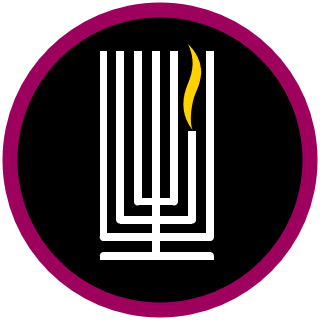
about the project
memory
- Marianna Adameczek
- Jerzy Aleksandrowicz
- Leszek Leon Allerhand
- Anna Maria
- Henryk Arnold
- Lea Balint
- Joanna Berens-Tomczyńska
- Aleksandra Berłowicz
- Wiesław Bieniek
- Irena (Agata) Bołdok (1)
- Barbara Asendrych
- Irena (Agata) Bołdok (2)
- Josef Bainvoll
- Ludwik Brylant
- Krystyna Budnicka
- Helena Choynowska Alter
- Krystyna Chudy
- Chuwcia Weicher
- Danuta Cukierman
- Ada Boddy
- Jerzy Cyns
- Czesław
- Andrzej Czajkowski
- Marian Bobrzyk
- Felicja Braun Bryn
- Emanuel Elbinger
- Ilonka Fajnberg
- Elżbieta Ficowska
- Marian Finkielman
- Frank Dobia
- Jerzy Frydman
- Henryk Ryszard Gantz
- Jerzy Dołębski
- Michał Głowiński
- Maria Gaber-Wierny
- Ignacy Goldwasser
- Aleksandra Frenkel-Czarniecka
- Pola Elbinger
- Barbara Góra
- Maria Feldhorn
- Zbigniew Ryszard Grabowski (1)
- Jadwiga Fiszbain-Tokarz
- Anna Goldman
- Hanka Grynberg
- Karol Galiński
- Jakub Gutenbaum
- Henryk Hajwentreger
- Janina Hincz-Kan
- Stella Kolin née Obremska
- Maria Greber
- Tadeusz Iger
- Danuta Hawel
- Ewa i Anna Janowskie
- Hanna Kleinberg
- Maja Hrabowska
- Karolina Heuman
- Krystyna Kalata-Olejnik
- Joanna Kaltman
- Joasia
- Andrzej Kaźmierczak
- Elżbieta Jadwiga Keiferowicz
- Jan Kac-Kaczyński
- Jan Klapper-Karpiński
- Jadwiga (Wicher) Kotowska, née Braun
- Maria Kamińska
- Lena Kaniewska
- Aleksandra Kaniuka née Rozengarten
- Robert Kulka
- Maria Kowalska
- Aleksandra Leliwa-Kopystyńska
- Maria Kosowicz-Bartnik
- Maria Leszczyńska Ejzen
- Henryk Lewandowski
- Roman Lewin
- Maria Kraft
- Alfred Królikowski
- Józef Lipman
- Zenobia Krzyżanowska
- Henoch Rafael Lisak
- Danuta Lis
- Lidia
- Zofia Lubińska
- Zofia Majewska
- Eugenia Magdziarz
- Rachela Malinger
- Teresa Lisiewska
- Rachela Malinger (2)
- Regina Loss-Fisior
- Katarzyna Meloch (1)
- Katarzyna Meloch (2)
- Celina Matusiak
- Joanna Neuding
- Edward Mersyk (Malinowski)
- Krystyna Nowak
- Krystyna Niekrasz
- Adam Nowicki
- Hanna Mesz
- Ludwik Oppenheim
- Bronka Niedźwiecka
- Wiesław Ostern
- Alina Parzęczewska
- Edmund Rudolf de Pellier
- Maria Orwid (Pfeffer)
- Maria Ochlewska
- Zofia Radzikowska
- Maria Perlberger-Schmuel
- Dasha Rittenberg
- Jana Prot
- Hanna Raicher
- Róża i Chana
- Adam Daniel Rotfeld
- Seweryn
- Estera Rosner
- Diana Russ
- Mieczysław Rudnicki
- Miriam Sharon
- Joanna Sobolewska-Pyz
- Sven Sonnenberg
- Liliana Sterling
- Halina
- Bronisława Szwajca née Eisner
- Marek Sznajderman
- Regina Szymańska
- Jerzy Ślęzak
- Wiktoria Śliwowska
- Dziunia Estera Tattelbaum vel Tajtelbaum
- Juliusz Jerzy (Piotr) Tober
- Marek Teichmann
- Juliusz Jerzy (Piotr) Tober—Letters
- Anna Trojanowska-Kaczmarska
- Henryka Trzcińska-Strzelecka
- Guta Tyrangiel-Benezra
- Romuald Jakub Weksler-Waszkinel
- Zygmunt Wolf
- Malwina Wollek
- Irena Wójcik
- Ela Waśniewska
- Bronisława Wajngarten
- Stefan Wrocławski
- Sabina Wylot
- Maria Teresa Zielińska
- Krystyna Zielińska
- Wilhelm Zienowicz
- Wanda Ziemska
video
- Katarzyna Andrejew
- Ada Boddy
- Krystyna Budnicka
- Elżbieta Ficowska
- Irena
- Anna Goldman
- Anna Grygiel-Huryn
- Hanka Grynberżanka
- Halina Gur
- Niusia (Bronisława) Horowitz-Karakulska
- Jadwiga Hreniak
- Uri Huppert
- Julia Jakubowską
- Andrzej Jonas
- Aleksandra Kaniuka (z d. Rozengarten)
- Wiesława Karaczewska
- Michał Kusterski
- Danuta Lis
- Joanna Neuding
- Joanna Sobolewska-Pyz (suplement)
- Stella Zylbersztajn-Tzur
- Aleksandra Leliwa-Kopystyńska
- Henryk Lewandowski
- Romualda Mansfeld-Booth
- Jacek Mazur
- Katarzyna Meloch
- Hanna Raicher
- Joanna Sobolewska-Pyz
- Barbara Schmid
- Zbigniew Siwiński (1)
- Zbigniew Siwiński (2)
- Bronisława Stępniewska
- Irena Szczurek







